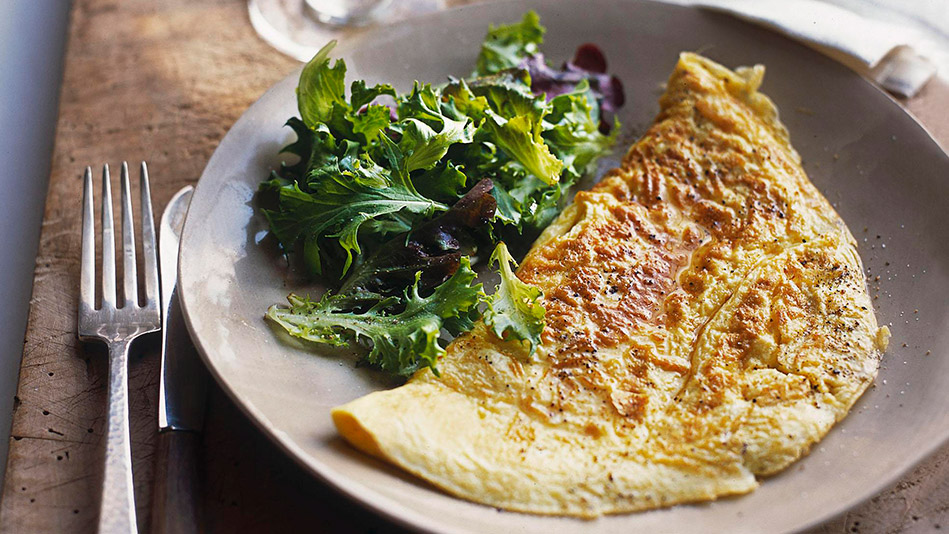I Am the Egg Man: One Man Masters the Omelet

Photo: Con Poulos
An omelet is an exquisitely simple, satisfying meal on a winter night. But as Bob Spitz learned, it pays to know a few tricks so your omelets turn out less like Silly Putty and more like the fluffy, glorious specimens they're meant to be.
Every winter, as soon as the temperature begins to drop and the comforter comes out of mothballs, I start dreaming about omelets. Not a day passes that I don't contemplate a three-egg beauty for breakfast. Or for lunch. Or a midafternoon snack. They are a snap to make and a surefire antidote to holiday excess. Besides, an omelet is like one of those old cardigans hanging at the back of your closet—homey, not too heavy, and a great winter standby. Best of all, you can whip one up in no time, at any hour of the day, using the most basic ingredients: just a few eggs, a pinch of salt and pepper, a splash of olive oil, a chunk of butter, and you're in business. Or, if you're feeling adventurous, the omelet gives you license to improvise. Onions, mushrooms, ham, cheese, spinach (or all of the above)—just about any vegetable, herb, meat, or seafood you have in the fridge can be folded into an omelet with ease; most ingredients, like bacon or shallots, need a quick sauté first, while cheese or avocado can be thrown in at the last minute. Lately, I've been stuffing mine with a generous combo of chopped chorizo and jalapeños before slathering guacamole and spicy salsa on top. At the other extreme, my wife, the purist, just rubs her omelet with a little melted butter, which seems a bit blah to me. Sometimes I convince her to go wild with a slice or two of Muenster melted inside, but for the most part her theory is that nothing improves the taste of egg.
Here's the good news: You don't have to be Mario Batali to make a delicious omelet. You do, however, need to learn the proper technique. I always assumed that meant beating a few eggs, plopping them into a pan, jacking the heat up to high, and flipping the eggs over when things no longer looked like soup. But that's the kind of omelet you master at Ralph's Cooking Academy and Auto Repair Institute; it has the weight and density of a Styrofoam cup. The classic, well-pedigreed omelet demands more respect than that. Legend has it that the dish dates back some 2,000 years, when the Roman epicure Apicius experimented by heating an egg mixture with milk, honey, and pepper and cooking it into a custard-like substance that resembled cottage cheese. Over the centuries, the French got hold of the idea, and before long that custard became a dish revered around the world.
According to Julia Child, a real omelet is an accomplishment, an art of the highest magnitude, and getting it right requires some practice. In the introduction to the 40th-anniversary edition of her cookbook Mastering the Art of French Cooking, she explains that she spent "eight pages on making a simple omelet." But I had never bothered to learn the proper technique until my recent pilgrimage to Europe to train in classic French cuisine with master chefs. After perfecting my foie gras au torchon, pistou, and coeur à la crème in a series of Michelin-starred restaurant kitchens, I visited Yannick Alléno, a three-star chef at the Hotel Meurice in Paris, hoping he'd teach me his signature duck in a crust of Indian spices nesting on a roasted peach half. Instead, he ordered me to the stove and said, "Make me an omelet." This was a mean stunt. In France, where culinary matters inspire a degree of passion normally reserved for the Mona Lisa, Jerry Lewis, and Simone de Beauvoir, chefs get hired based on how they make an omelet. "If you can't do this with flair and expertise," Alléno told me, "you don't deserve to work on anything more difficult."



